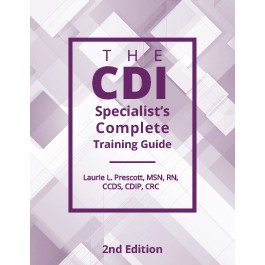Book excerpt: HAC primer

Training Guide, Second Edition
By Laurie L. Prescott, MSN, RN, CCDS, CDIP, CRC
In 1999, the Institute of Medicine (IOM), a nonprofit, nongovernmental organization, reported in “To Err is Human: Building a Safer Health System,” that medical errors represent one of the leading causes of mortality in the United States. In particular, the IOM noted that medical error–related deaths came primarily from complications caused by a patient’s hospital stay, resulting in 50,000 preventable deaths, with an associated cost of $20 billion.
The findings consequently led Congress to authorize CMS to alter its reimbursement to hospitals for patients who suffer a preventable condition. Later, the Deficit Reduction Act of 2005 required a quality adjustment in an MS-DRG payments for certain hospital-acquired condition (HAC). Essentially, CMS stopped paying for certain conditions caused, even inadvertently, by the care the facility provided.
In 2007, CMS required hospitals to have coders identify which conditions were present on admission (POA), present at the time of the inpatient order, versus those that were not. This allowed CMS to easily discern which conditions could be considered HACs based on their development after admission. As far as CMS is concerned, those diagnoses that occurred or were diagnosed at the time the inpatient order was written were to be considered CCs or MCCs, while those that occurred during the time the patient was being treated as an inpatient were to be considered complications, according to CMS’ “Present on Admission Indicator Reporting by Acute Inpatient Prospective Payment System Hospital Fact Sheet,” published in October 2011.
Not every condition that develops after admission is considered a HAC, however. Section 5001(c) of the Deficit Reduction Act of 2005 required the secretary to identify conditions that:
- Are either high cost, high volume, or both
- Result in the assignment of a case to a MS-DRG that has a higher payment when present as a secondary diagnosis (e.g., a CC or MCC)
- Could reasonably have been prevented through the application of evidence-based guidelines
Beginning with discharges after October 1, 2008, hospitals would not receive higher payment for cases when one of the selected conditions is acquired during the hospitalization (i.e., was not POA) if it served as the only CC or MCC. These cases are paid as though that secondary diagnosis was not present, according to CMS’ October 2012 HAC Fact Sheet.
Conditions that are considered HACs include foreign body accidentally left in the body after a procedure, stage III or IV pressure ulcers, and fractures. Physicians often need help understanding what is considered a HAC and what is not. For example, a pneumonia that develops after admission will still provide an MCC, as it is not considered an HAC.
Editor’s note: This article is an excerpt from The CDI Specialist’s Complete Training Guide, Second Edition.
